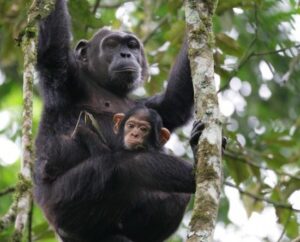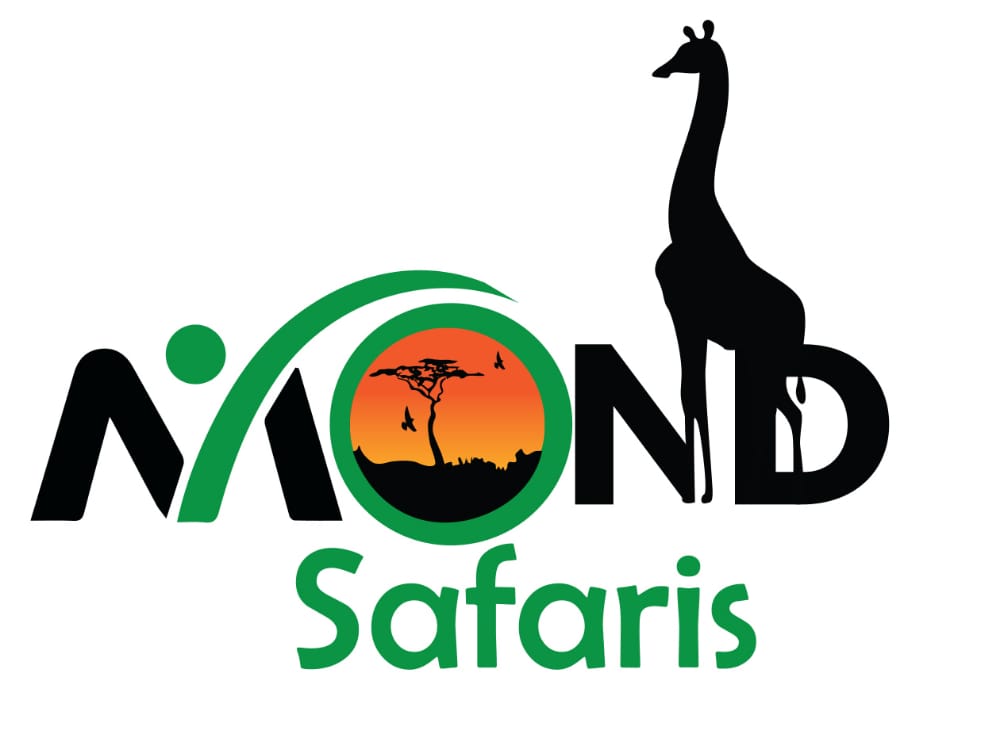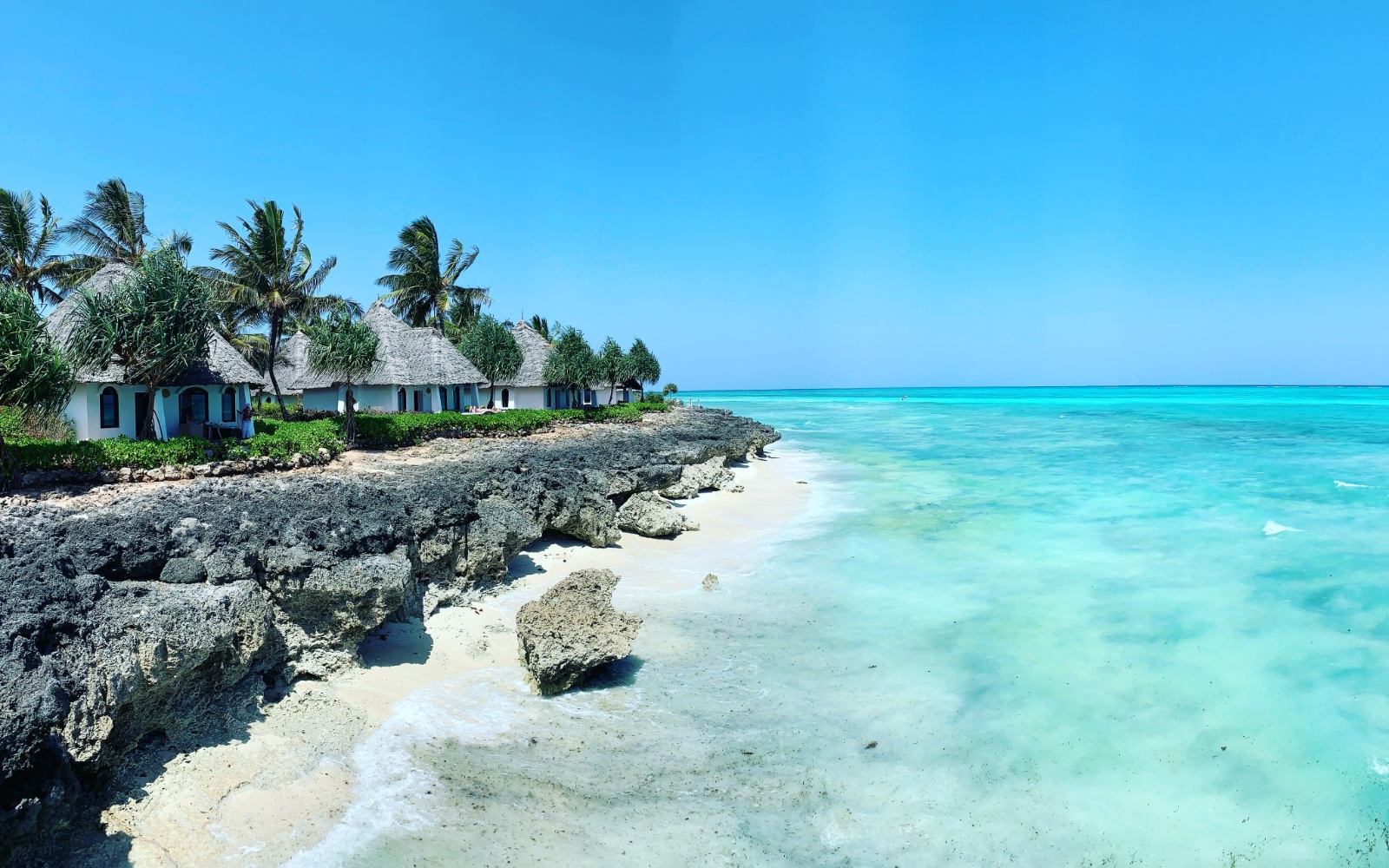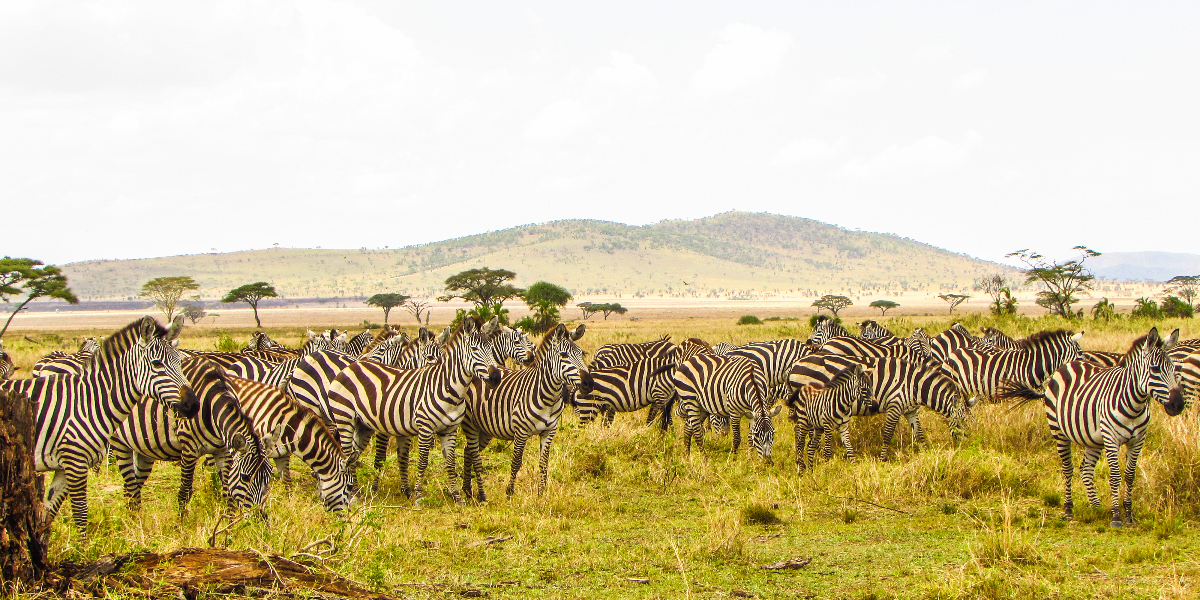Embark on an African adventure like never before as we unveil the top 7 best…

Gorillas and Chimpanzee trekking
Comparing Gorillas and Chimpanzee Trekking Experiences in Equatorial Africa
Gorillas and Chimpanzee trekking experiences are two of the most extraordinary safari adventures in tropical Africa. Adventures into the African rainforests to see gorillas and chimpanzees in the wild are exceptional authentic experiences that comfortably take the top position on bucket list jungle experiences in Africa. Coming face to face with an intelligent and thoughtful primate closely related to us is undoubtedly unlike any other animal encounter in Africa.
Anyhow, if you want to make your mind on which of the two adventures should make it to your next summer vacation bucket list and wondering how the gorilla trekking experience compares with chimpanzee trekking, we highly recommend both. They both have exhilarating experiences worth the spend.
The fact that both gorillas and chimpanzees are primates, a biological order of species that includes humans, is a strong magnet to crowds of tourists in the central African rainforests hoping to spend a moment with these intelligent apes. Trekking in the misty, muddy, thick African jungle to spend a 1-4 hour moment with gorillas or chimpanzees is more similar than different.
Comparison Facts About Mountain Gorilla and Chimpanzee trekking
The key scientific classification difference between a gorilla and chimpanzee is that the gorilla belongs to the tribe Gorillini and genus Gorilla. In contrast, the chimpanzee belongs to the tribe Hominini and genus Pan. Nonetheless, both primates are great apes.
The Gorilla and chimpanzee are great ape primates belonging to the same Hominidae (hominids) family as bonobos, humans, and orangutans. They both are tailless, have large brains compared with body weight, strong arms, opposing long, grasping fingers and toes.
Next to humans, chimpanzees and gorillas have the largest brain size compared to body size, are the most intelligent of all other primates, and share more than 98% of human DNA. However, chimpanzees are more closely related to humans because they have larger brains and are more intelligent than gorillas. It is enchanting to watch both these primates because of their fascinating behaviors triggered by intelligence; that’s why gorilla and chimpanzee trekking is such a popular Africa safari adventure.
The Gorilla is a herbivorous ape dieting exclusively on species of vegetative foods (especially bark). The chimpanzee is an omnivorous ape feeding exclusively on more fruit species and animal foods like duiker & monkey meat.
Gorillas are the largest living primates but don’t let the size fool you. These apes have been nicknamed “gentle giants” because of their typical nonchalant demeanor. They live quietly and forage in small patriarchal groups led by dominant ‘silverback’ males. An adult gorilla can weigh up to 220 kg (485 pounds) and stand to about 1.8 m (6 ft) tall, though the silverback is almost twice the size of a female.
Chimpanzees aren’t much different. They are highly social and live in patriarchal communities of several dozen animals, led by an alpha male and his coalition of male allies. Chimps typically stand up to 1.6 m (5.5 ft) tall when upright. Males can weigh up to 154 pounds, while females can weigh 110 pounds.
However, unlike their peace-loving primate relative, aggressive and violent behavior is inherent among chimpanzees. In fact, male chimpanzees are often known to attack one another over territorial disputes. Research has shown chimp-on-chimp violence to be pretty common, suggesting that chimpanzees are predisposed to murder.
The IUCN lists both apes as endangered to extinction. Both great apes are endemic to the tropical rainforests of Africa. However, the mountain gorilla, a subspecies of gorilla, occupy the volcanic mountain slopes of east and central Africa in Uganda, Rwanda and DRC highlands.

Where to go for Gorilla and Chimpanzee trekking
You can see gorillas and chimps in a handful of protected national parks in Equatorial Africa.
You can find only two living species of gorillas surviving in Equatorial Africa. The western gorilla, commonly caged in zoos, occupies the equatorial forests of Nigeria, Cameroon, the Central African Republic, Equatorial Guinea, Gabon, the Republic of Congo, Angola, and DRC. The other species that get the most attention in the wild, the eastern gorillas, live in the Democratic Republic of the Congo (DRC), Uganda, and Rwanda.
The best places to see gorillas in the wild are Uganda, Rwanda, DRC, the Republic of Congo, and the Central African Republic (CAR). Two of the best places to see gorillas in Africa are undoubtedly Bwindi Impenetrable National Park in southwestern Uganda highlands and Volcanoes National Park in northwestern Rwanda’s Virunga mountains slopes.
These two places have the best conservation and sustainable programs and infrastructure wrapped around gorilla trekking adventures, including some of the best jungle retreats for a memorable vacation getaway in the remotest parts of Africa.
Adventures into the African rainforests to see gorillas and chimpanzees in the wild are genuinely extraordinary experiences every nature traveller should do at least once in their lifetime. Coming face to face with an intelligent and thoughtful primate closely related to us is undoubtedly unlike any other animal encounter in Africa.
What is Gorilla and Chimpanzee trekking?
In an effort to collect funds to conserve the gorillas and chimpanzees in Africa, government authorities and conservation bodies introduced adventures that allow tourists guided tours into the protected forest parks to find and spend limited time with these primates. These adventures are commonly known as gorilla trekking or chimpanzee trekking.
For the adventures to happen, a few selected chimps and gorilla groups (troops) had to undergo a habituation process of gradually introducing them to the presence of humans without altering their habitat and social lives. The habituation process usually takes 2-5 years, and it’s not to tame but to make the apes at least tolerant of people, usually to a distance of around ten meters.
Therefore, gorilla trekking is a guided tourist activity in Africa’s tropical forests where rangers and a local expert tracker escort a defined group of tourists into the rainforest to find a family of human habituated gorillas and spend restricted time with them. Usually, authorities allow getting as close as 10 meters (32 ft), and the encounter can last from 1 – 4 hours with the relaxed gorillas.
Chimpanzee trekking is not much different. Being omnivores, chimpanzees are much more active than the usually inactive, calm, and vegetarian gorillas. Chimpanzee trekking can often be quite an exhausting and exhilarating experience at the same time, especially during a hunt that compels a trekker to swiftly keep up on foot as they swing effortlessly through the forest canopy.
Differences/Similarities Between Gorillas and Chimpanzee trekking
First, is the enormous difference in the trekking permit cost that would make you choose one over the other. A Chimpanzee trekking permit/ticket is much cheaper than a gorilla permit. For example, a half-day gorilla permit in Uganda’s mountain forests costs $700 per person per trek, compared to a chimpanzee permit in the lower tropical rainforests at $50 – $200 per person. The same gorilla permit costs $1500 per person in Rwanda’s Volcanoes compared to chimp permit in Nyungwe forest, going for $90 bucks apiece.
The same applies to the price of a full-day habituation experience permit. In Uganda, a gorilla habituation permit costs $1,500 per person, six times more than the chimp habituation permit at $250 per person.
Second, is the number of visitors allowed to trek a single troop of primates. The number of tourists vising a human habituated gorilla or chimpanzee family is highly restricted to small groups for a short time at a controlled distance of 10 meters (32 ft). That’s because the great apes can catch human diseases due to our close DNA relation and in part to prevent unknown consequences for overstaying our invite.
However, chimpanzee trekking allows more guests to trek a human habituated troop than gorilla trekking. Gorilla trekking permit in Uganda & Rwanda allows a randomly selected group of not more than eight tourists, escorted by two rangers and led by one expert tracker guide. Chimpanzee trekking allows for 10-12 guests per chimp group. Some porters sometimes come along to help guests hike steep slopes and carry their backpacks, still, the number of trekkers stays controlled.
The selection of who joins what excursion group is random and is done early morning at the briefing point before the trekking begins. Usually, trekkers are gathered at the trailhead by 7:30 AM for the briefing session. Here, the warden reads and explains trekking rules and procedures and determines which gorilla or chimp group you can trek based on your physical fitness.
Thirdly, gorilla trekking rules are somewhat similar to chimpanzees since primates share almost the same traits. Before you head into the jungle, a park warden will orient the trekking group on basic rules like, don’t eat near the primates; don’t mimic their sounds; avoid directly staring into the alpha male’s eyes; try to keep 10 meters away and avoid direct contact at times. They’re simple rules everyone can master but the trek to find the gorillas or chimps is what can break or make the whole trekking experience.
Gorillas and chimps freely roam within the protected national park in wide territorial ranges. Mountain gorilla home ranges vary from 3 to 15 km2 (1.2 to 5.8 sq mi), and their movements range around 500 m (0.31 mi) or less on an average day. Since they build new nests for sleeping every night, they forage in a different range every day. Therefore, trackers guide guests to a different spot every morning, which could last from 30 minutes to 4 hours before you find the chimp or gorilla group. Or sometimes longer than anticipated, especially during the dry season when there’s less food and the primates have to forage deeper into the forest to find food.
In comparison, gorilla trekking is much more challenging than chimpanzee trekking, especially tracking Uganda, DRC, and Rwanda’s Virunga mountain gorillas. Mountain gorillas, like the name imposes, live in high slopes of Virunga Mountains and southwestern Uganda’s rift valley forested rugged highlands at 2,200–4,300 meters (7,200–14,100 ft).
Trekking that high on uneven terrain, through the misty, muddy, and impenetrable jungle is not for the faint-hearted. One has to prepare to be challenged physically and mentally, but the experience will leave some of the most cherished memories of your contact with untamed nature in Africa.
Compared to mountain gorilla trekking, the chimpanzee experience is usually on a lower, more even rainforest floor, and it’s much easier to locate the chimp troop using their loud personality. It’s the keeping up with the troop, once you find them, that will wear you out.
Unlike their larger cousins, chimps are hyper-active during foraging expeditions and don’t stay still for long for you to relax. Visitors often have to sweetly keep up on foot as the chimps swing effortlessly through the forest canopy. The best place to experience the wild chimps without expending too much physical energy is Kibale National Park in western Uganda. The forest is relatively flat with navigable forest growth that usually takes less than two hours to find the chimps.
Gorilla Trekking & Chimpanzee Trekking Safaris
East Africa has incredible bucket-list gorillas and chimpanzee trekking adventure vacations, in particular the forests of Rwanda and Uganda. A week’s adventure holiday in Uganda or Rwanda, a few feet from your wild cousins, will test your veins with adrenaline excitement.
If you’re hoping to see mountain Gorillas and Chimpanzee trekking in their natural habitat, you should visit Uganda and Rwanda; DRC is ideal for seeing only gorillas (lowland and mountain gorillas). These countries have the best infrastructure for trekking experiences and conservation programs to support the apes’ continuous existence.



